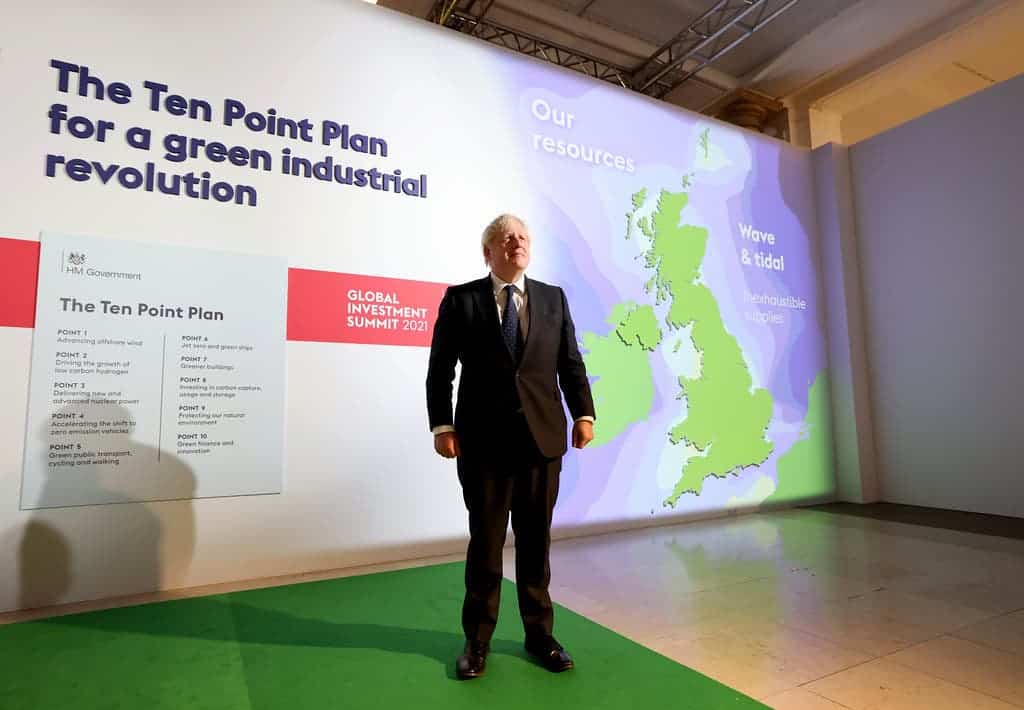Just days away from hosting a massive climate change summit, the UK government presented a roadmap to reaching net-zero emissions by 2050. This means no longer adding to the total amount of greenhouse gases in the atmosphere, something the UK claims to achieve through nuclear energy, planting forests, electric vehicles, and sustainable aviation fuel.
The plan represents a test of the UK’s credibility, as the government will seek similar commitments from other countries at the United Nations climate conference COP26. From October 31st to November 14th, delegates will gather in Glasgow, Scotland to discuss ways to raise the bar and avoid the worst consequences of the climate crisis.

The long-awaited plan will bring in $124 billion in private funding and create almost 500,000 new jobs by 2030, according to the UK government. Nevertheless, the government doesn’t actually want to put an end to the country’s use of fossil fuels, with environmental organizations questioning its actual scope and classing the some aspects of the plan as ‘weak’.
A roadmap for the future
British Prime Minister Boris Johnson said the plan will lead to well-paid jobs, green industries and billions in investment, powering a “green industrial revolution” across the country. The UK will build a “defining competitive edge” in sectors such as offshore wind, EVs and carbon capture, while still supporting people and businesses, he added.
The UK was the first big economy to commit by law to reach net-zero emissions by 2050. In fact, the country’s emissions dropped by 44% from 1990 to 2019, especially emissions from the power sector. But the government has been facing pressure for not introducing an actual road map that explains how net-zero would be accomplished. In other words, no credible roadmap has been laid down.
Still, the government insists that it will decarbonize the entire power sector by 2035. This will be largely thanks to renewable energy, with 40 gigawatts of offshore wind expected to be added to the grid, and to nuclear projects, with a $166 investment expected in new plants. Hydrogen will also be expanded as well as carbon capture and storage.
On transportation, another key sector in terms of emission in the UK, the government plans to invest in electrifying vehicles and their supply chain, as well as allocating money for buses, railways, and cycling lanes. There’s also a goal to produce up to 10% of the aviation fuels from household waste by 2030 and to capture flue gases from the industry.
“There is a global race to develop new green technology, kick-start new industries and attract private investment. The countries that capture the benefits of this global green industrial revolution will enjoy unrivalled growth and prosperity for decades to come – and it’s our job to ensure the UK is fighting fit,” UK Business and Energy Secretary Kwasi Kwarteng said.
Still, climate experts and environmentalists weren’t that much convinced. Rebecca Newson, Greenpeace UK’s head of politics, said the government’s plan is “more like a pick and mix than the substantial meal that we need to reach net zero,” while Katie White from WWF said the plan doesn’t close the gap “between climate promises and action.”
Whether or not the promises will be kept still remains to be seen. Unfortunately, the current UK government has a history of overselling or flat-out lying about its plans. We can only hope this isn’t the case here. The full strategy can be accessed here.


